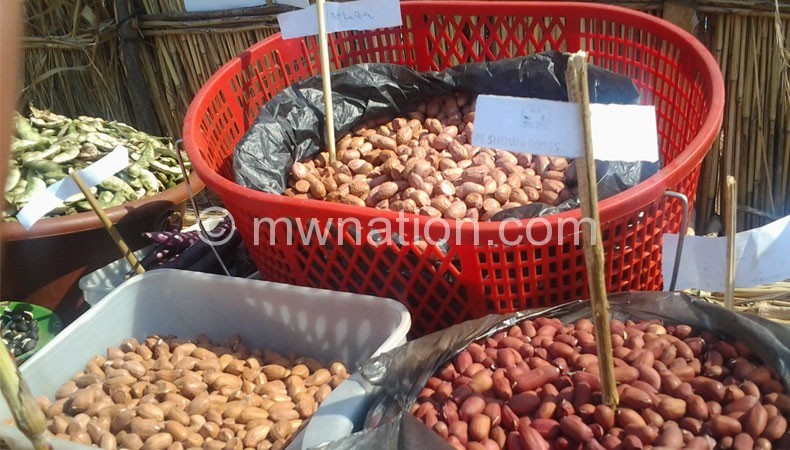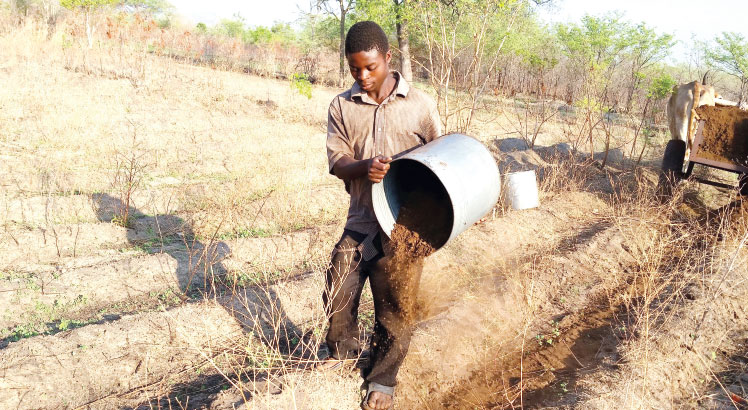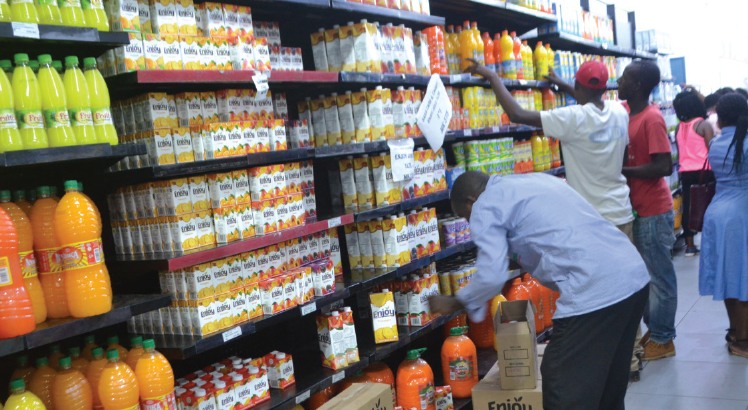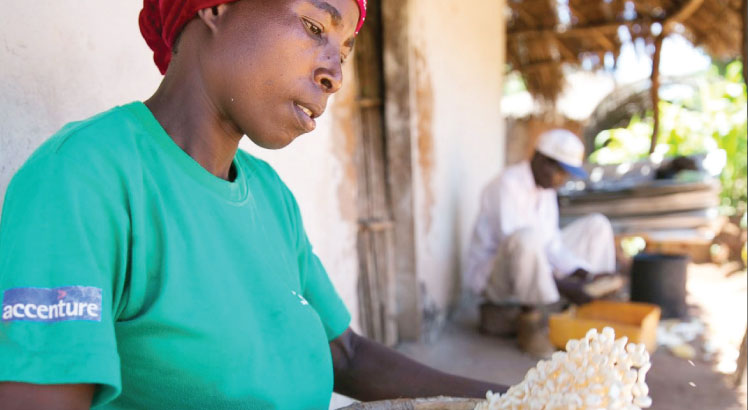Aflatoxin giving headache to farmers, threatens export market

Aflatoxin, a naturally occurring mycotoxins that are produced by aspergillus flavus and aspergillus parasiticus, a species of fungi, that usually attacks groundnuts, is a big concern for people of Traditional Authority (T/A) Mkanda in Mchinji. The fungi that produce aflatoxin grow on crops, particularly groundnuts, wheat, maize, beans and rice.
Last year, sporadic attacks of the fungi on groundnuts resurfaced in the district. However, this time around, the devastation was limited by better preparation. Previously, the battering was severe on both the crop and the livelihoods that depend on it.
Today, the biggest fear is no longer whether it will come again or not. Recent initiatives such as training farmers on preparing groundnuts in a manner that prevents aflatoxin have reduced the prevalence and scale of the attack on the crop.
The concern now is on the economic costs of the fungal disease on farmers.
“Because of this [fungal] disease, we cannot find markets which are ready to purchase from us apart from the usual vendors who come here and buy our purchase at very low prices.
“Those who buy us usually sell outside the country but we hear they can’t do so because the country’s groundnuts is becoming unmarketable due to aflatoxin,” explains Greyson Chilemba, a groundnut farmer from Chilesha Extension Planning Area (EPA) in TA Mkanda in the district.
Crop scientists say consuming food products contaminated with aflatoxin can even cause various cancers, including breast cancer.
“Chuku (the Chichewa word for Aflatoxin) is bad. It’s poisonous and it makes our groundnuts bitter and denies us market,” adds Esther Madeni, a farmer from the same area.
“Even the leaves of groundnuts which we normally give our livestock as feed are dangerous if attacked by chuku as it threatens the lives of livestock,” she adds.
And it’s a harsh reality. Worse still, Aflatoxin is pushing Malawi’s majority smallholder groundnuts farmers into the hands of unscrupulous vendors as access to established local and foreign markets become limited.
“We can’t attract any other markets apart from the vendors who also buy the groundnuts without first testing presence of aflotoxin. Other established markets are scarce and almost no-existent in our area. Where there are established markets, anyone wants to make sure the groundnuts do not have aflatoxin,” says Teniford Chagunda, a lead farmer in the Chilesha EPA.
Recently, South Africa announced it was banning all imports of groundnuts from Malawi and other Common Market for Eastern and Southern Africa (Comesa) countries due to the aflatoxin threat. Malawi then was exporting around 45 000 tons of groundnuts to the rainbow nation.
Government earlier admitted that aflatoxin contamination has disrupted smooth international exports of various crops from Malawi and conceded the country had to do more to stop the high aflatoxin contamination of its agriculture products.
Civil Society Agriculture Network (Cisanet) project officer Tiwonge Msomba Banda, whose organisation has commissioned studies on aflatoxin prevalence and related consequent challenges, has been organising media tours to highlight the extent of the problem, among others.
He says a recent Cisanet policy study to understand the capacity gaps in the effective control of aflatoxin in the groundnuts value chain was initiated as a basis to advocate for policy and structural practices.
“Study findings reveal that aflatoxin is a significant problem in Malawi both in local markets as well as in shops and supermarkets which require urgent and concerted action,” he says.
The study also confirms the Mchinji farmers’ fears that aflatoxin is also derailing progress towards established markets.
“In the end, we found out that it’s the vendors who benefit from the situation. The farmer and country suffers; the farmer wants a market for export and the country has ambitious economic growth goals but all this can’t happen with aflatoxin wreaking havoc in the agriculture sector particularly on groundnuts,” he says.
The Cisanet study also revealed that in Malawi, aflatoxin is more prevalent in groundnuts than in maize.
Speaking during a recent media tour, Cisanet communication officer Emmanuel Muwamba said despite the economic impact of aflatoxin on the communities affected being greater, little public attention is paid.
“There is a need for clear understanding of the impact of aflotoxin and the challenges communities attacked by aflotoxin face, so the media is crucial to passing the message,” he said.
According to Carol Kayira Kulemeka, Oxfam’s economic justice coordinator, whose organisation for years has been fighting for opening up markets for farmers in rural areas and recently organised a campaign to draw political attention, farmers in rural area in general face numerous challenges to sell their produce.
“A farmer produces soya beans, for example, hoping to go to Admarc and get a market but gets disappointed. There is no money to buy the harvest. He sees a vendor who purchases it at a very low price. It’s a disincentive as next time, the farmer will not have enough money to invest again,” she explains.
Kulemeka further cautions: “Again, the country’s economy depends on agriculture and famers also don’t just produce for food but for their economic well-being. So, development has suffered at national and household levels. It has huge consequences on moving the development agenda forward.”
She narrated the cross-cutting issues perpetuated by this lack of access to market, among them gender and HIV and Aids implications as farmers particularly women travel long distances searching for markets.
“Before we commissioned the study, we also did an internal analysis of the situation to understand the matter. We learnt that at first the farmers used to sell their products at Admarc and the alternative was vendors. Then Admarc became underfunded, the vendors became the main player. It posed two challenges; the vendors were buying at cheap prices and they were not reaching remote areas,” explains Kulemeka.
According to the Malawi Investment and Trade Centre (Mitc), groundnuts and maize exports are meeting challenges to enter some markets which have strict controls on aflatoxin levels in food items.
But all is not lost. While farmers now have grasped the new farming best practices to do away with aflatoxin, the central government too is leaving no stone unturned to fight the disease.
Malawi has taken major steps to address the problem of aflatoxin contamination in its groundnuts and the government is optimistic that the country will soon be able to start exporting uncontaminated groundnuts to international markets.
Among other things, government has set up a laboratory at Chitedze Research Station in Lilongwe to test and certify all groundnuts and other grain bound for export market.
Farmers, aided by several agribusiness organisations and non-governmental institutions, seem to be fighting back.
“Aflatoxin starts at seed level due to poor storage and preparations. Today, organisations such as Nasfam [National Association of Smallholder Farmers of Malawi], Lead and agro-dealers are helping us fight aflatoxin through trainings. We know today that traditional ways of preparing seeds and harvesting have to be changed to avoid the disease,” says Chagunda, a farmer from Mchinji.





